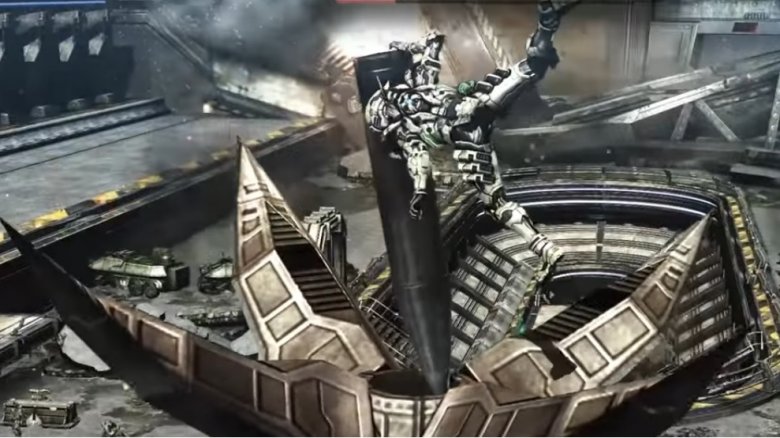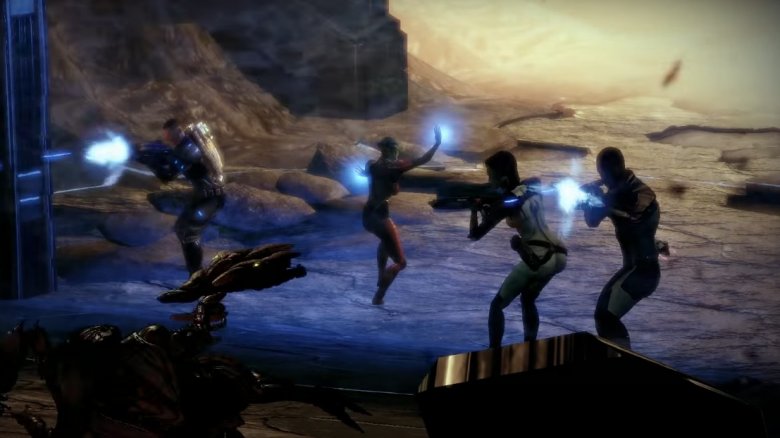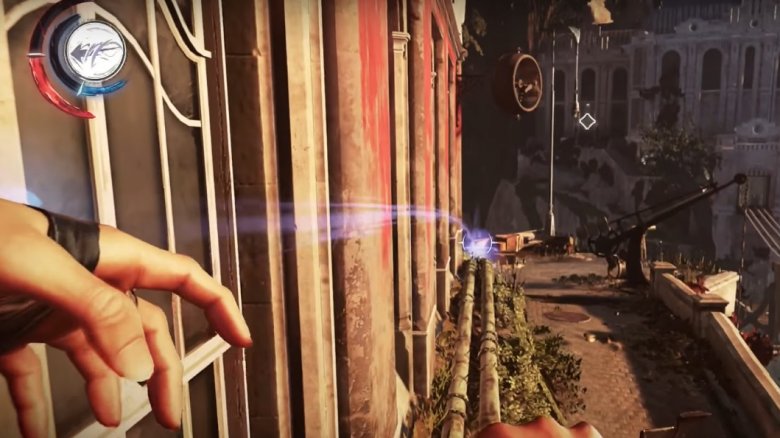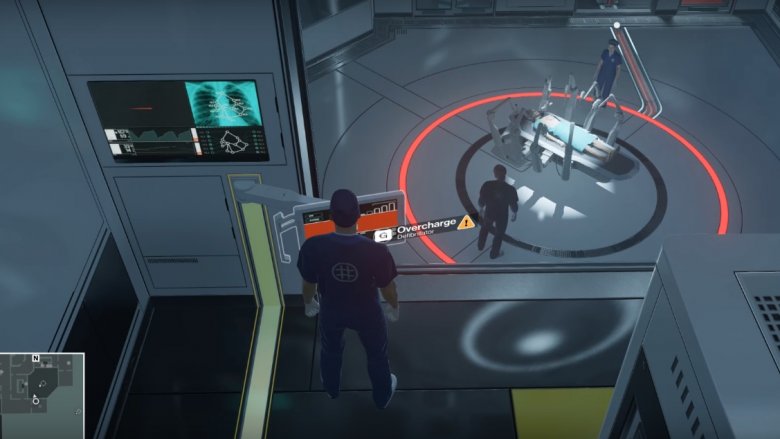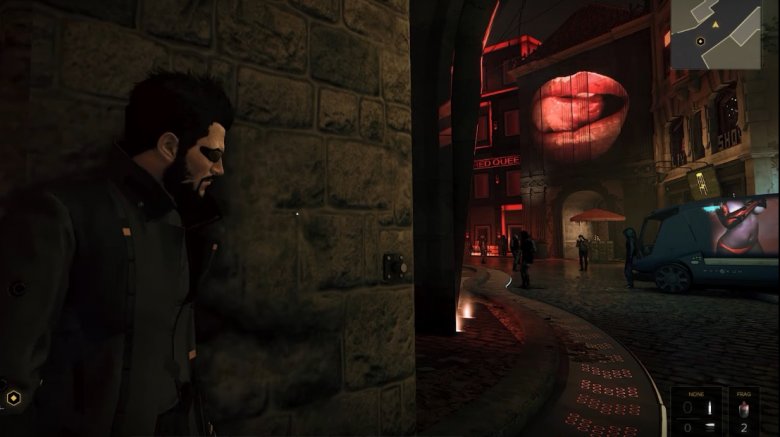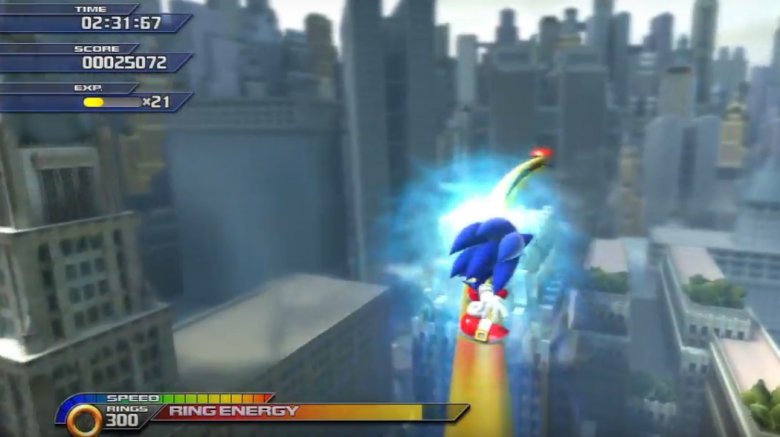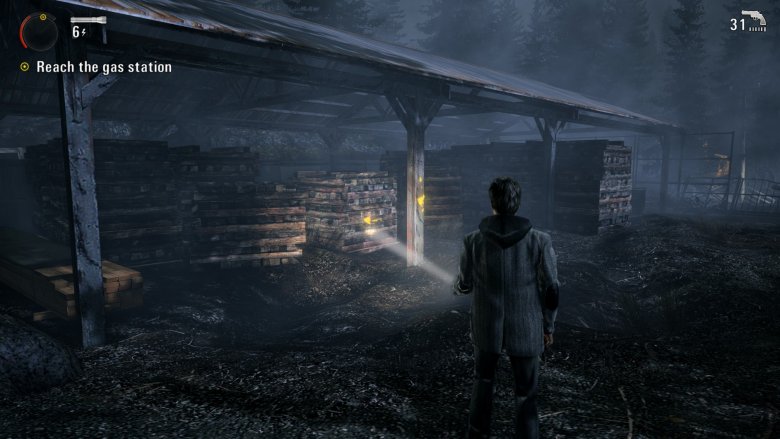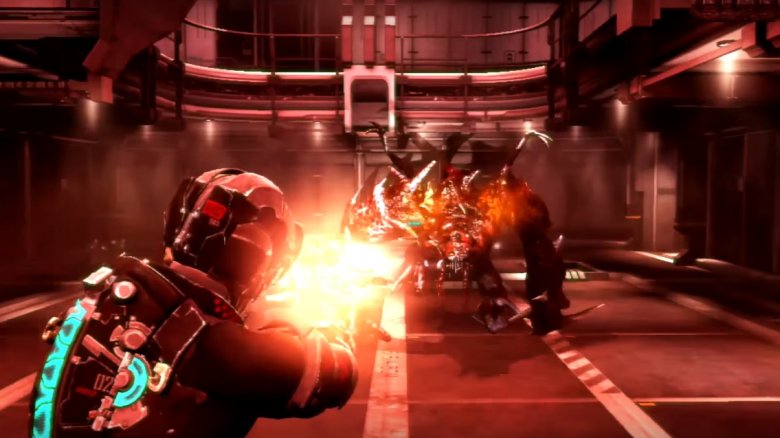Video Games That Are Better The Second Time Around
What makes a game inherently replayable? Is it the allure of trying out different paths and powers that you never explored or utilized the first time through? Is it simply to get a better understanding of a deceptively complex game's addictive mechanics? Or is it because you wanted the good ending that you just couldn't manage your first time? Whatever the reason, the fact of the matter remains that with some games, one playthrough just won't give you the full experience. We've rounded up the absolute best games for diving into again and again—the adventures that are built from the ground up to keep on giving long after the credits roll.
The Stanley Parable
The Stanley Parable is notable for not only being a game that's better the second time around, but also the third, fourth, fifth, sixth—you get the idea. Virtually every replay will reveal a new secret storyline or path to explore. It's insane.
During your first playthrough, you'll probably follow the narrator's instructions and arrive at the normal end of the game. Nothing too incredible, but interesting enough. Then the second time, maybe you'll choose to disobey and hide in a broom closet. Well, bam, you get a new ending for being insubordinate and churlish, all while the narrator makes fun of you. Or what if you manage to get lost in The Stanley Parable's office building and somehow wind up in heaven? If you replay it more than once, any of these things might happen, on top of other possibilities—saving a baby from a fire, following an elaborate adventure, or winding up in a different game entirely. The Stanley Parable just. Doesn't. End. It simply leaves it up to you to find a new, quirky conclusion to a narrative that'll just restart the second you think it's finally out of tricks.
Vanquish
Vanquish is one of the most fast-paced, high-octane third-person shooters in the genre. Not only does it hand you an insane arsenal of unique weapons to choose from, including but not limited to a high-tech shotgun, laser ray, assault rifle and disc launcher, but it also imbues you with super-speed, insane melee attacks, the ability to slow down time and do insane roll-dodge maneuvers. If that all sounds like a lot to wrap your head around, that's because it is. To make matters worse, the game's difficulty is steep and the entire experience is condensed into a five-hour campaign, meaning that if you're having troubles early on, the later levels are going to be absolute nightmares given how quickly the degree of challenge escalates.
Fortunately, for all of its difficulty, the game is oodles of fun and encourages the player to get better at every instance, meaning after a first run-through, the logical next step will be to up the difficulty, restart from stage one and give the game a second go. The second playthrough is the one where the player will really see the depth of the game's mechanics shine, revealing an entirely different experience than the one they haphazardly blasted through the first time around.
Mass Effect 2
In Mass Effect 2, every choice you make matters—even if you don't realize it until the end of the game when it's too late. See, there are optional missions that you can complete for some bonus experience points and to get in good with your crewmates. Turns out, by the end of the game, they're kind of essential and if you didn't do them, you're in for a bad time. To make matters worse, even if you do attempt them, if you haven't been aligning yourself with one of the rigidly structured "good" or "bad" dialogue trees 100 percent of the time, you won't be able to complete them. This means that by the time your first playthrough is set to wrap, odds are that final mission is going to kick your ass.
In comes the second playthrough. This time, you'll know to not actually roleplay but rather to just pick dialogue based off its color palette, complete every optional mission in the galaxy, then storm into that final mission with a vengeance, wherein your teammates won't get picked off like flies and you'll pull it off without a single casualty. All of this is scripted based off those choices you made earlier in the game, so unless you're one of the dozen people who've yet to play Mass Effect 2, you already know the pain of what happened when you didn't realize how wise you had to be the first time around.
Dishonored 2
Dishonored 2 grants you more than enough runes, the items used to acquire magical powers, to experiment with a decent portion of Corvo and Emily's supernatural abilities during your first playthrough. However, you won't know the full extent of either of their arsenals if you regulate yourself to just one. That's why, upon completing your first run of the campaign from either protagonist's perspective, you're offered the opportunity to play again in new-game-plus mode.
This mode not only carries over all the runes you collected from your first playthrough, but also allows you to select from either Emily or Corvo's ability pools, meaning regardless of who you pick, all major powers will be available. Couple that with the extra runes you'll collect through the actual missions, and you'll potentially have access to every ability inside of one playthrough, which is not only the most immersive way to experience the game as it'll enable you to explore every single nook and cranny of the various levels, but it also functions as one hell of a cathartic power trip that you'd never get the first time around.
Hitman 2016
Hitman is a game all about creative killing, and no installment does a better job of capitalizing on that theme like 2016's entry in the franchise. Each and every locale in Hitman 2016, from Paris to Hokkaido, features dozens of different ways to take out your targets. Some methods are straightforward, such as tossing a screwdriver at the back of a person's head. Others are complex as heck, involving posing as a supermodel that you knocked out a few minutes' prior, walking down a runway in his clothes and then using your V.I.P. backstage access to murder the fashion label owner with a garrote wire. Either method achieves the mission—one of them just sounds a lot more fun.
Here's the caveat: it's unlikely you'll figure out how to trigger that second example on your first playthrough, meaning you'll likely end the stage via the screwdriver route, or something equally mundane. However, with a few replays, you'll discover the ins and outs of each stage until you discover the first steps towards pulling off those incredibly cool, unquestionably unique kills that Hitman prides itself on. Then the game really opens up, allowing for insane set pieces and cinematic moments you'd likely never even catch a glimpse of during your first playthrough.
Deus Ex: Mankind Divided
Unlike its predecessor Deus Ex: Human Revolution, which took players on a tour across futuristic depictions of China, Singapore, the United States, Canada and even the Arctic Ocean, Mankind Divided features only one fully-developed region: Prague. But what it lacks in the diversity of its predecessor's varied locales it more than makes up with the inclusion of exponentially more detail.
There isn't a game on the market right now that funnels as much frame-for-frame authenticity into a city as Mankind Divided's Prague. From the metro stations that perfectly depict western Europe's public transportation venues right down to the details on the floor tiles to the impeccably designed TF29 base which features at least a hundred painstakingly personalized work spaces and NPCs, MD's developers try extremely hard to make you feel like you're in a living, breathing world. Unfortunately, the nuances of these efforts, such as the perfectly replicated architectural designs of Prague's various neighborhoods, are typically lost on players just looking to beat the game.
Thankfully, a second playthrough means there's no rush to follow the plot to its conclusion, leaving players to spend more time enjoying the immaculate digital tourist trip Eidos Montreal has prepared. It's one of the only times a video game might actually make you want to travel to the city for yourself—or even pass on a trip since you've already seen it in-game; an even bigger testament to the developers' achievement.
Sonic Unleashed
The daytime stages of Sonic Unleashed are furiously fast, so much so that it's virtually impossible to catch even a fraction of the best speed-running paths on your first playthrough. On your first run of any given stage, odds are that within just a few seconds of gameplay you'll have missed multiple different routes and not even know it, leaving levels feeling a bit like linear race courses. However, upon a second, third and fourth revisit to each stage, it's revealed that a little exploration can go a long way, unveiling paths that were incredibly well hidden and some that previously didn't even seem possible.
A prime example of this type of path, the kind that requires a few playthroughs to discover and utilize, is the secret ring trail in Empire City. At the opening of the stage you'll be required to attack a chain of enemies, but if you boost left after the second enemy, off into the middle of nowhere, you'll come across a secret trail of rings that will spring you right into the next section of the level. How on Earth do you find something that off the beaten path by yourself? Lots and lots of playthroughs. Simple as that. And once you know these little shortcuts, speed-running to break old time records becomes a lot more fun.
Alan Wake
There's no way around it: Alan Wake has a pulpy story with a lot of thick, heavy-handed stylistic nods to Stephen King. What's this translate to in-game? Tons of ambiguous dialogue, subtle plot details, and general foreshadowing that'll breeze past most players during their first playthrough, which will make the heavily bittersweet cliffhanger ending that much more confusing.
The remedy (if you'll excuse the developer pun) for this issue is simple, thankfully: play through the game a second time. Just like with any dense narrative, a rewatch, re-read, or in this case replay will give you a second chance to absorb all the information the game threw at you the first go around, only this time you'll be ready for it. Alan Wake is especially susceptible to this form of decoding, as its riddle-laden manuscript pages and dense, novel-esque backstory make a lot more sense when you know how the story ends and everything ties together. In short, if you want to enjoy the richest possible experience from Alan Wake's exceptional narrative, give it a second run.
Dead Space 2
Even though you might not notice it while you're busy trying to stay alive, a lot of effort goes into the ambiance of a horror game. On your first playthrough, you're probably preoccupied by the horrific monsters trying to kill you at every turn, or the constant flickers of light preceding a surprise ambush. Ironically, the actual implementation of fear by the designers is the biggest reason you'll likely never notice all their hard work. Sounds counter-intuitive, right? Well, it is—though it really helps to bolster your appreciation for a game like Dead Space 2 your second time around, when you can not only enjoy the fear in a more controlled sense since you know what's coming, but also take a few moments to look around at the beautifully crafted environment the developers have created.
As scary as it is, Sprawl, the infested space station where the game takes place, is an engineering marvel filled with some of the most scenic views in all of gaming. A second playthrough lets you really appreciate its painstakingly crafted, breathtaking views of space, as well as other cool visual elements like its awesome air-vacuum effects that whisk you off your feet and make your heart pound whenever a wall explodes and separates you from the infinite sea of dark matter right outside. It's a game with aesthetics so stellar that they alone warrant a second playthrough.
Thumper
Ever try playing a musical instrument, and you're absolutely nailing your insane solo until oops, you plucked the wrong guitar string, blew too hard into the piccolo, or hit the drum off the beat? A crushing wave of defeat leaves you driven to replay the part, this time with every intention of nailing it—and that's Thumper's whole shtick.
You play as a little metallic beetle trapped on a rollercoaster from hell, tasked with simply tapping buttons in accordance with beat indicators as they appear in the lane ahead of you. The twist? Everything's coming at you at a hundred-plus miles per hour. It's a rock-hard, lightning-fast rhythm game that you'll never, not in a million years, ace on your first try. Given that performing its synth-percussion musical cues perfectly is the entire point of the game, you'll be replaying this one a second time, and a third, and a fourth, until eventually you can ace every act flawlessly and hear its music the way the developers intended.



